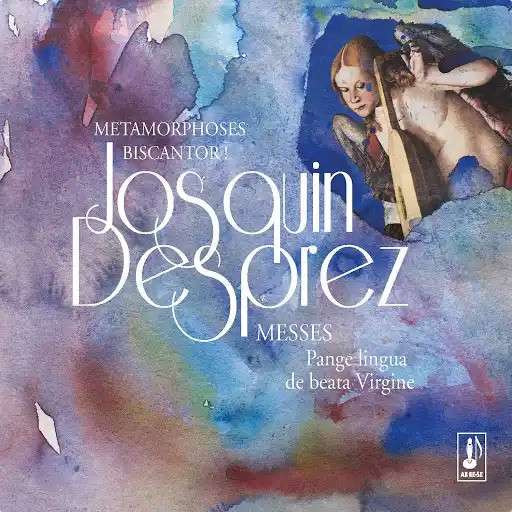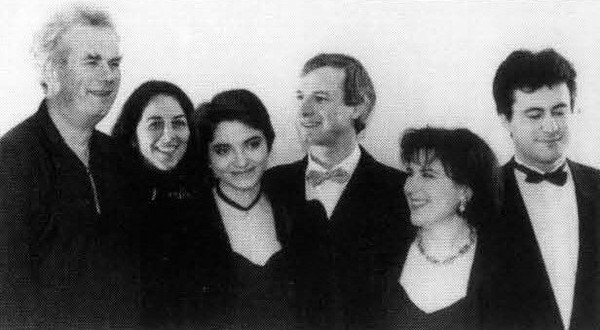
Métamorphoses, Biscantor !
Josquin: Messes Pange Lingua & de Beata Virgine
Album FR 2016 on AR Re-Se label
Classical (Renaissance)
http://www.arre-se.com/disk_desprez-2-en.html Recording : l’Homme armé éditions Recorded from the 1st to the 5th september of 2014 in Javols Church (Lozère, France) We thank Monsieur Malavieille, Javols mayor, and Le Regimbal hotel for their hospitality. Production : L’Homme armé éditions La Chapelle des Flandres Traduction : Marcia Hadjimarkos Distribution : NewArts International ----- No complete recording of the masses of Josquin Desprez, one of the greatest musicians of all time and a luminary of Franco-Flemish music, has ever been made. In 2006 Maurice Bourbon decided to remedy the situation and began his complete Mass series, entitled Josquin l’Européen, in order to do justice to this towering figure of the world’s musical heritage. Maurice Bourbon is passionate about Josquin’s writing, which brings together grandeur and meticulous attention to detail, like a Gothic cathedral whose superb and lofty heights seem at first glance to overshadow the details of its reliefs and intricate carvings. The Pange lingua and de beata Virgine masses, Josquin’s veritable testament, provide aweinspiring examples. The Pange lingua mass, Josquin’s last great work, was composed between 1514 and 1517. Its unity stems from the Pange lingua hymn, which provides a thread of continuity and appears in its entirety in the final Agnus Dei. The mass combines tranquil sweetness and lyric flights, and is sustained by the rules of composition Josquin consistently used to shape his works: a variety of canons (at the octave, the fifth, and the fourth), “machines” (the “inner workings” distributed among four voices, which echo each other exactly or in accordance with the degrees of the mode), and alternating homophonic sections. But unity is a far cry from monotony: laments and majesty follow each other in the Kyrie; tightly woven mechanisms are featured in the Et in terra pax, Patrem omnipotentem, Et resurrexit, Et in spiritum, and the Osanna; the Qui tollis, Et incarnatus est, Sanctus, and Benedictus are inward-looking; and of course the Agnus Dei is highly lyrical. The mass de beata Virgine was published by Petrucci during Josquin’s lifetime, in 1514. In contrast to the unity of the Pange lingua, this mass presents great diversity. It was not composed in 1514, however, but made up of fragmenta missarum written during the composer’s mature years and largely devoted to the Virgin Mary. This variety is evidenced in the choice of modes (D for the Kyrie and Gloria, E for the Credo, G for the Sanctus and Agnus Dei); the number of voices used (four for the first two movements, five for the last three); and the ranges, which are extremely high for the superius (the highest voicepart), except in the Credo. Josquin’s polyphonic expertise is apparent in the lines, the soaring heights, the interwoven canons (including a very long one written at the fifth, which stretches uninterrupted from the beginning of the Credo to the end of the mass); polyrhythmic “machines” (3 against 2 rhythms are frequent, and a difficult and slow-moving 3 against 4 appears in the Qui cum patre). Atmospheres and moods are equally varied and include intricate writing in the Et in terra pax and Patrem omnipotentem; the rushing “machines” of the Amen of the Gloria; and the calm generosity of the Sanctus and the Agnus Dei. But the work is dominated above all by a wonderful vitality, which reflects that of the composer at the time of its writing and carries the listener irresistibly to the final Dona nobis pacem, which rises to the heavens... A vivid work! Maurice Bourbon invited six experienced members of the Métamorphoses ensemble and four young and promising singers from the Biscantor! ensemble to take part in these two works: three sopranos, one mezzo-soprano, one counter-tenor, three tenors, one baritone and one bass. This group allowed him to reconstitute the varied tessitura of the de beata Virgine mass, to highlight certain themes, and to bring to life the long lines in a single breath.
Musicians
 | Métamorphoses , album by |
 | Biscantor ! , album by |
 | Philippe Roche voc, g, bass vocals |
 | Sylvain Manet countertenor vocals |
 | Maurice Bourbon voc, FR music director, baritone vocals |
 | Juliette de Massy scl, soprano clarinet |
 | Claire Régent soprano vocals |
 | Maud Haering soprano vocals |
 | Noémie Capron soprano vocals |
 | Emmanuel Hasler tenor banjo |
 | Marcio Soarès tenor vocals |
 | Vincent Lièvre-Picard , tenor vocals |
Producers
| Yves Reynier cover |
| Marc Guerra graphic design |
| Jean-Marc Laisné mastered by, recorded by |
Album Tracks
| No | Title | Artist | Composer | Duration |
|---|---|---|---|---|
| 1 | Missa Pange Lingua Kyrie | Métamorphoses, Biscantor ! | ||
| 2 | Missa Pange Lingua Gloria | Métamorphoses, Biscantor ! | ||
| 3 | Missa Pange Lingua Credo | Métamorphoses, Biscantor ! | ||
| 4 | Missa Pange Lingua Sanctus | Métamorphoses, Biscantor ! | ||
| 5 | Missa Pange Lingua Agnus Dei | Métamorphoses, Biscantor ! | ||
| 6 | Missa de Beata Virgine Kyrie | Métamorphoses, Biscantor ! | ||
| 7 | Missa de Beata Virgine Gloria | Métamorphoses, Biscantor ! | ||
| 8 | Missa de Beata Virgine Credo | Métamorphoses, Biscantor ! | ||
| 9 | Missa de Beata Virgine Sanctus | Métamorphoses, Biscantor ! | ||
| 10 | Missa de Beata Virgine Agnus Dei | Métamorphoses, Biscantor ! |
